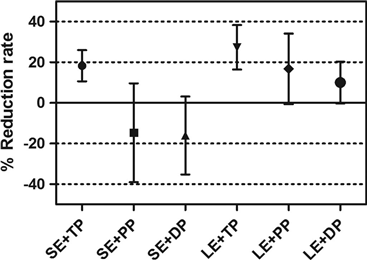글로벌 연구동향
핵의학
- 2021년 09월호
[Clin Nucl Med.] Lymphoscintigraphic Findings as Indicators of Lymphaticovenous Anastomosis Outcome in Patients With Extremity Lymphedema: A Retrospective Cohort Study이화의대 / 김혜옥, 우경제, 윤혜전*
- 출처
- Clin Nucl Med.
- 등재일
- 2021 Jul 1
- 저널이슈번호
- 46(7):549-555. doi: 10.1097/RLU.0000000000003630.
- 내용
Abstract
Purpose: This study was performed to evaluate the usefulness of lymphoscintigraphy in predicting the surgical outcomes of lymphaticovenous anastomosis (LVA) in a patient with extremity lymphedema.Patients and methods: We retrospectively evaluated 133 patients with extremity lymphedema who underwent lymphoscintigraphy followed by LVA surgery from February 2018 to March 2020. Lymphoscintigraphic findings were evaluated on the following parameters: the extent of dermal backflow (small/large), lymphatic flow patterns (trunk flow pattern/proximal-restricted pattern/distal-restricted pattern), visualization of lymph nodes, and collateral lymphatic vessels. The mean circumferential difference change before and after surgery, circumferential reduction (CR) rate (%), was used as the clinical outcome variables.
Results: A decrease in circumference was observed in 93 (69.9%) of 133 patients after LVA. The extent of dermal backflow and lymphatic flow patterns was significantly correlated with improved clinical outcomes after LVA. The large extent of the dermal backflow group showed a more significant CR rate than the small extent (19.27% vs 1.24%, P = 0.005). The TP group showed the most significantly decreased CR rate to 21.46%, and the proximal-restricted pattern and distal-restricted pattern groups were -2.49% and -5.33%, respectively (P < 0.001). Multivariate analysis revealed that dermal backflow and lymphatic flow patterns were independent predictors of therapeutic outcome (P < 0.001).
Conclusions: Our study demonstrates that pretreatment lymphoscintigraphy may help predict the therapeutic effect of LVA in patients with extremity lymphedema. Furthermore, dermal backflow and lymphatic flow patterns are independent predictors of CR rate after LVA surgery for extremity lymphedema.

그림 The postoperative therapeutic outcomes were poor when both a small extent of dermal backflow and restricted lymphatic flow patterns were present on lymphoscintigraphic findings. This analysis was performed using analysis of covariance with adjusting for visualization of lymph node and collateral lymphatic vessels.
Affiliations
Hye Ok Kim 1 , Kyong-Je Woo 2 , Bom Sahn Kim 1 , Seo Young Kang 1 , Byung Seok Moon 1 , Hai-Jeon Yoon 1
1 From the Departments of Nuclear Medicine.
2 Plastic Surgery, College of Medicine, Ewha Womans University, Seoul, Republic of Korea.
- 연구소개
- 림프-정맥 문합술을 시행한 환자에서 수술 전 lymphoscintigraphy 소견을 통해 수술 효과를 예측할 수 있는지에 대한 연구 논문입니다. Lymphoscintigraphy 소견 중 dermal backflow 정도와 lymphatic flow 양상이 수술 효과의 독립적 예측 인자임을 입증하였습니다. 이는 lymphoscintigraphy 가 림프 부종 환자의 치료 방향 설정에 유용한 정보를 제공할 수 있음을 보여주는 연구입니다.
- 덧글달기
- 이전글 [Clin Nucl Med.] Asymmetric Amyloid Deposition as an Early Sign of Progression in Mild Cognitive Impairment Due to Alzheimer Disease
- 다음글 [Cancers (Basel).] Predicting Survival in Patients with Pancreatic Cancer by Integrating Bone Marrow FDG Uptake and Radiomic Features of Primary Tumor in PET/CT








편집위원
사지 림프부종환자에서 lymphaticovenous anastomosis의 효과를 lymphoscintigraphy로 예측할 수 있음을 보여준 임상연구임. Lymphoscintigraphy상 dermal backflow 범위가 넓거나 trunk flow 형태를 보이는 경우 lymphaticovenous anastomosis의 효과가 더 잘 나타남을 보여 줌. 혈관외과 및 핵의학 임상가에게 관심을 끌 연구로 생각되며 lymphoscintigraphy의 활성화에 도움이 될 것으로 생각됨.
덧글달기닫기2021-09-02 11:31:53
등록
편집위원2
최근 수술장비와 수술기술의 발달으로 LVA가 활발히 이루어지고 있는데 수술전 lymphoscintigraphy가 수술결과의 indicator 역할을 할 수 있다면 임상적으로도 적용이 간편하고 검사의 활성화에도 많은 도움이 될 것이라 생각됩니다.
덧글달기닫기2021-09-02 11:34:55
등록